| Weight | 1 lbs |
|---|---|
| Dimensions | 9 × 5 × 2 in |
| host | mouse |
| isotype | IgG2a |
| clonality | monoclonal |
| concentration | concentrate, predilute |
| applications | IHC |
| reactivity | human |
| available size | 0.1 mL, 0.5 mL, 1 mL concentrated, 7 mL prediluted |
mouse anti-TLE1 monoclonal antibody (ZM93) 6387
Price range: $160.00 through $528.00
Antibody summary
- Mouse monoclonal to TLE1
- Suitable for: Immunohistochemistry (formalin-fixed, paraffin-embedded tissues)
- Reacts with: Human
- Isotype:IgG2a
- Control: Synovial sarcoma
- Visualization: Cytoplasmic
- 0.1, 0.5, 1.0 mL concentrated, 7 mL prediluted
mouse anti-TLE1 monoclonal antibody ZM93 6387
| target relevance |
|---|
| Protein names Transducin-like enhancer protein 1 (E(Sp1) homolog) (Enhancer of split groucho-like protein 1) (ESG1) |
| Gene names TLE1,TLE1 |
| Protein family WD repeat Groucho/TLE family |
| Mass 83201Da |
| Function FUNCTION: Transcriptional corepressor that binds to a number of transcription factors. Inhibits NF-kappa-B-regulated gene expression. Inhibits the transcriptional activation mediated by FOXA2, and by CTNNB1 and TCF family members in Wnt signaling. Enhances FOXG1/BF-1- and HES1-mediated transcriptional repression (By similarity). The effects of full-length TLE family members may be modulated by association with dominant-negative AES. Unusual function as coactivator for ESRRG. {ECO:0000250|UniProtKB:Q62440, ECO:0000269|PubMed:10660609}. |
| Subellular location SUBCELLULAR LOCATION: Nucleus {ECO:0000269|PubMed:12397081}. Note=Nuclear and chromatin-associated, depending on isoforms and phosphorylation status. Hyperphosphorylation decreases the affinity for nuclear components. |
| Tissues TISSUE SPECIFICITY: In all tissues examined, mostly in brain, liver and muscle. |
| Structure SUBUNIT: Homooligomer and heterooligomer with other family members. Binds RUNX1, RUNX3, FOXA2, KDM6A, UTY, histone H3, HESX1, ESRRG and the NF-kappa-B subunit RELA. Interacts with HES1 (via WRPW motif). Binds TCF7, LEF1, TCF7L1 and TCF7L2 (By similarity). Interacts with SIX3. Interacts with EFNB1. Interacts with TLE4 (By similarity). Interacts with FOXG1/BF-1; the interaction is inhibited by TLE6/GRG6 (By similarity). {ECO:0000250|UniProtKB:Q62440, ECO:0000269|PubMed:10660609, ECO:0000269|PubMed:10748198, ECO:0000269|PubMed:11731482, ECO:0000269|PubMed:12441302, ECO:0000269|PubMed:14651967, ECO:0000269|PubMed:21429299, ECO:0000269|PubMed:8649374, ECO:0000269|PubMed:8687460, ECO:0000269|PubMed:9334241, ECO:0000269|PubMed:9751710, ECO:0000269|PubMed:9854018, ECO:0000269|PubMed:9874198}. |
| Post-translational modification PTM: Phosphorylated, probably by CDK1. The degree of phosphorylation varies throughout the cell cycle, and is highest at the G2/M transition. Becomes hyperphosphorylated in response to cell differentiation and interaction with HES1 or RUNX1.; PTM: Ubiquitinated by XIAP/BIRC4. {ECO:0000269|PubMed:22304967}. |
| Domain DOMAIN: WD repeat Groucho/TLE family members are characterized by 5 regions, a glutamine-rich Q domain, a glycine/proline-rich GP domain, a central CcN domain, containing a nuclear localization signal, and a serine/proline-rich SP domain. The most highly conserved are the N-terminal Q domain and the C-terminal WD-repeat domain. {ECO:0000305|PubMed:18254933}. |
| Target Relevance information above includes information from UniProt accession: Q04724 |
| The UniProt Consortium |
Data
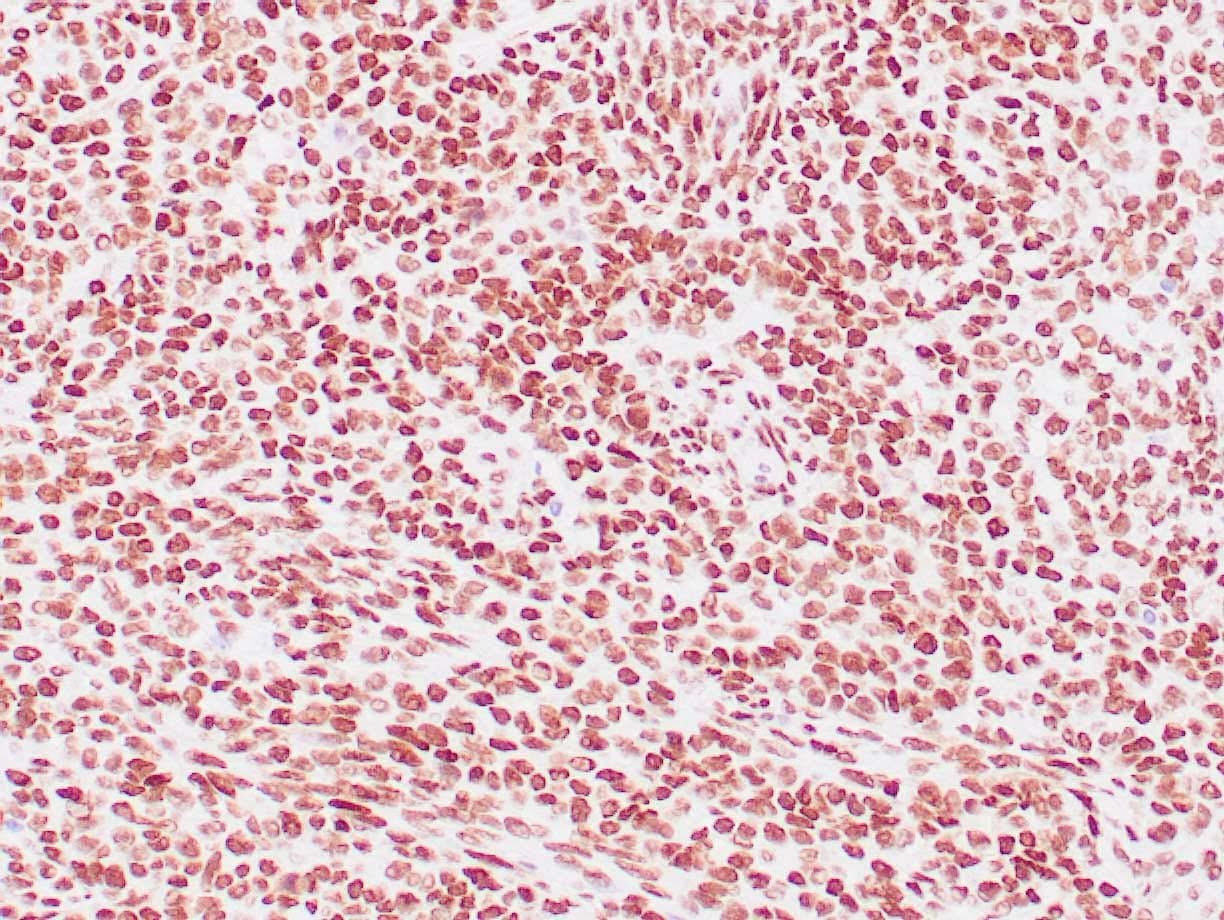 |
| Human synovial sarcoma stained with anti-TLE1 antibody using peroxidase-conjugate and DAB chromogen. Note nuclear staining of tumor cells. |
Publications
| pmid | title | authors | citation |
|---|---|---|---|
| We haven't added any publications to our database yet. | |||
Protocols
| relevant to this product |
|---|
| IHC |
Documents
| # | SDS | Certificate | |
|---|---|---|---|
| Please enter your product and batch number here to retrieve product datasheet, SDS, and QC information. | |||
Only logged in customers who have purchased this product may leave a review.
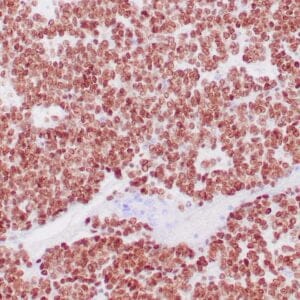
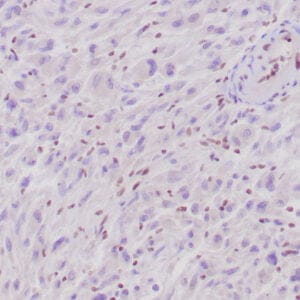
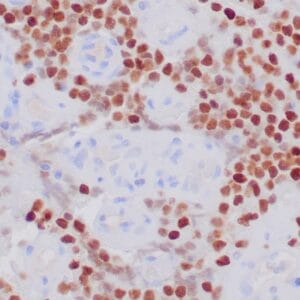
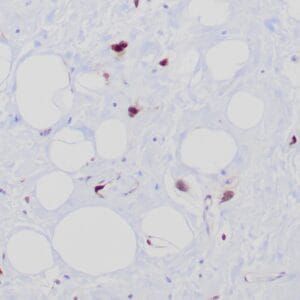
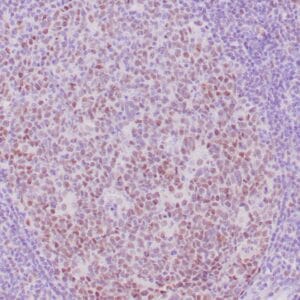
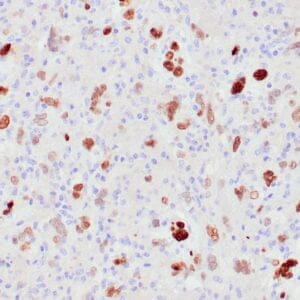

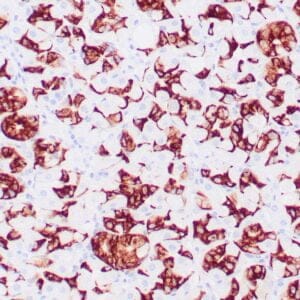
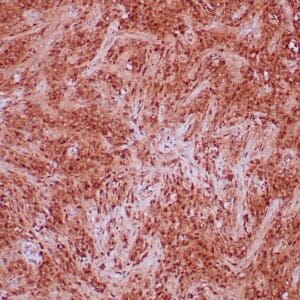
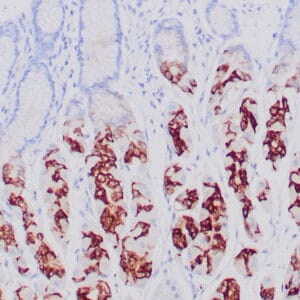
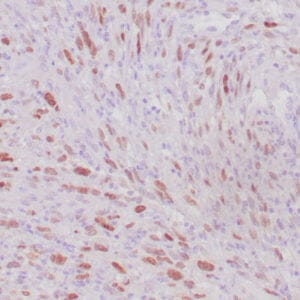
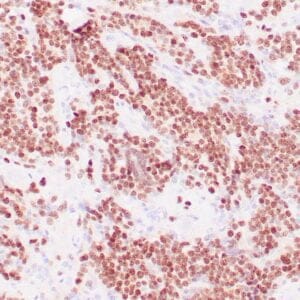
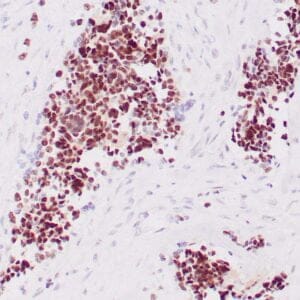

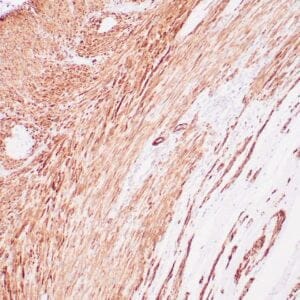
Reviews
There are no reviews yet.